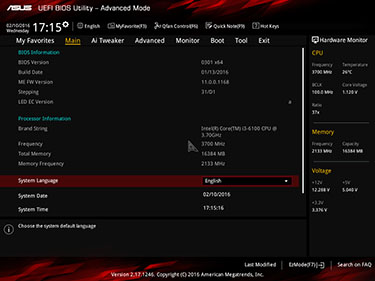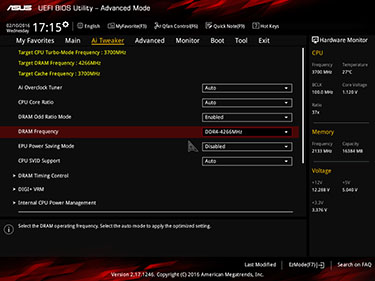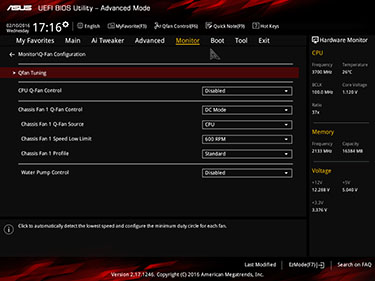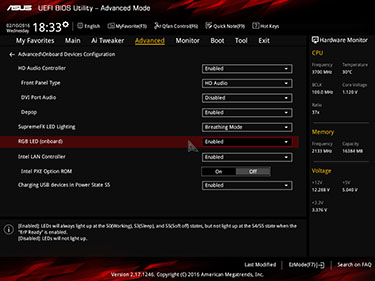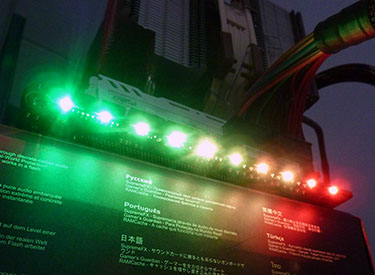BIOS and lights
Asus goes with the standard UEFI BIOS that's been home to boards for a good while. We manually updated it to the 0301 version without any hiccups. Thought not primarily designed as a board ripe for overclocking, the BIOS is similar to that found on Z170K motherboards.
The B150 chipset's limitations are apparent when delving into the AI Tweaker section. There's no method of overclocking the test Core i3-6100 CPU via either the multiplier or base clock. Stock speed is your only choice. Asus offers an improbable number of additional memory ratios, right the way up to 4,266MHz, but in our testing anything other than 2,133MHz would result in a failed POST... and this is on memory natively specified at 2,400MHz. Point is, this is a board built to run the components at stock frequencies.
We are advocates of the Asus Qfan tuning ability. A couple of minutes spent here can quieten down the system considerably, and the fans' exact profile can be toggled by pressing F6 and bringing up the explicit Qfan page. Using any one of four preset parameters - standard, silent, turbo or full speed - is an easy way of regulating the speeds, though choosing manual enables you to drag a line that dictates fan-speed based on temperature.
Remembering what's special about the Aura, a couple of BIOS options offer a means by which to change the function of the red lighting around the southbridge and the status of the RGB lighting itself. By default it is on at all times when the PSU is plugged in and simply switched on - the PC needn't be running.
Controlling the lighting is made easy by some Aura software available as a separate download. Five general effects are listed, and these are enhanced by a drop-down menu that offers an additional array of choices. The options are active immediately as the 'Apply' button is pressed.
Pulling the board out of the test PC and on top of the box offers a better glimpse of the 10 LEDs in action. They're bright, well-defined, and offer enough light to be clearly seen in a mid-sized chassis outfitted with a window. It's a board for the crowd that already has an RGB keyboard, mouse or headset.






